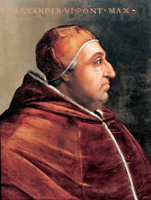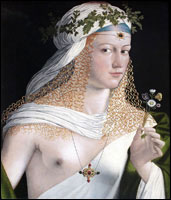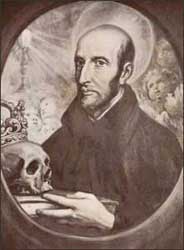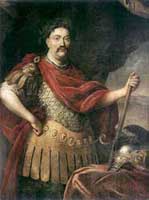For the first 3 centuries, there were 10 great pagan persecutions of Christianity, culminating in the longest and bitterest under Emperor Diocletian. It is called the Era of the Martyrs, and the bishops and deacons were always the first to be arrested and executed. In Roma, it is known as the Era of the Catacombs, when the life of the Christians consisted of persecutions above ground . . . and prayer underground. Persecution kept the Congregation pure and nobody lifted up his head above his brothers, or sought preeminence.
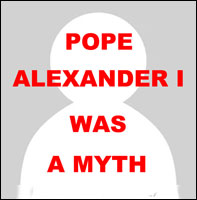 Pope Alexander (107–115) never existed. |
|
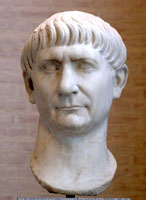 Roman Emperor Trajan (53–117). Emperor from 98 to 117. |
Saint Peter was linked to Roma for 2 reasons: he used his sword to defend Christ in the Garden of Gethsemane, and he denied Christ 3 times before the rooster crowded. The impetuous Peter later repented, and became a stalwart Apostle and missionary to the JEWS. He never once set foot in the imperial city. Only after seeing 3 visions would he enter the house of a Roman soldier named Cornelius!
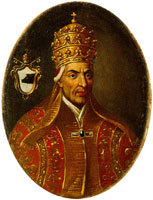 Pope Alexander II (1015–1073). Pope from 1061 to 1073. |
|
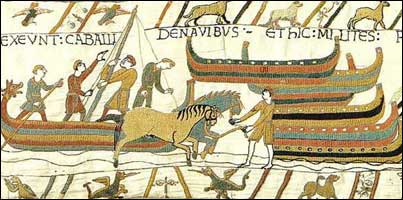 The Normans leisurely disembarking their horses. The Normans leisurely disembarking their horses. |
After the Normans leisurely disembarked, they marched unopposed to London. There Duke William became King "William the Conqueror." That fateful event was the beginning of the Babylonian Captivity of Britannia.
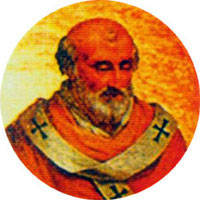 Pope Alexander III (1105–1181). Pope from 1159 to 1181. |
|
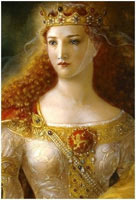 Queen Eleanor (1122–1204). Queen from 1154 to 1189. |
After his demise in 1181, 2 Popes followed him in quick succession: Lucius III (1181–1185), and Urban III (1185–1187). Then began the very short reign of Pope Gregory VIII.
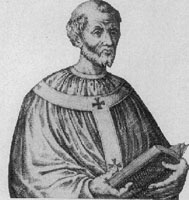 Pope Alexander IV (1254–1261) holding a copy of Expositio in Apocalipsim. |
|
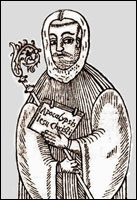 Joachim of Fiore (1135–1202). |
The Muslims call Mohammed the "Holy Spirit" or Paraclete....When nothing happened in 1260, the date was pushed back to 1290, then a new date of 1335 was proclaimed. That prophecy almost came to pass in that year because the Black Plague wiped out 50 million souls, and left the door wide open for the Terrible Turks.
The next Pope Alexander's birth name was Peter of Candia or Peter Phillarges. It is beyond belief why he wanted to occupy the "Chair of St. Peter," yet adopted the throne name of Alexander.
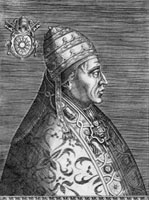 Antipope Alexander V. Pope from June 1409 to 1410. |
|
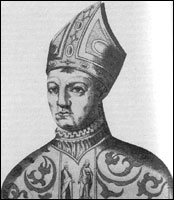 Pisan Pope John XXIII (1370–1419). Reigned from 1410 to 1415. |
In 1415, Saint John Hus was burned alive at the stake because he advocated getting rid of ALL of the Popes . . . forever! In 1958, Angelo Roncalli adopted the throne name John XXIII when he succeeded Pope Pius XII.
|
|
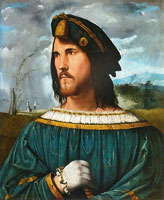 Cesare Borgia (1475–1507). |
The entire Papacy of Alexander was one of murder and mayhem. The highlight of his Papacy was the "Dance of the Chestnuts," which took place on October 31, 1501. A German priest named Johann Burckard kept a diary of his entire reign.
|
|
Pope Alexander died of poisoning 2 years later and the blessed Reformation of Saint Martin Luther put an end to the debaucheries in the Vatican!
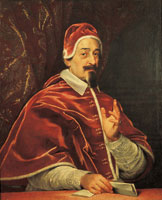 Pope Alexander VII. Pope from 1655 to 1667. |
|
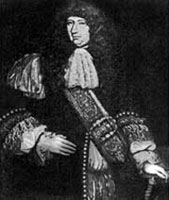 Sir George Downing (1623–1684). |
However, a counter-revolution followed and the monarchy was restored by his son, King Charles II. Charles launched the greatest manhunt in the history of the world to find the "regicides" who signed his father's death warrant. They were more than ably assisted by Sir George Downing—the British Judas Iscariot!
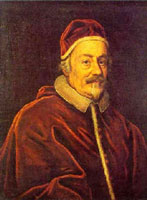 Pope Alexander VIII. Pope from 1689 to 1691. |
|
Succeeding Popes were no more successful in persuading the Terrible Turks to invade Germany again.
Pope Alexander VIII was the last Alexander in the nightmarish Papal dynasty. The best way to rescue Catholics . . . and Muslims . . . from the Babylonian system is to present a true history of the papal dynasty:
Flee out of the midst of Babylon, and deliver every man his soul: be not cut off in her iniquity, for it is the time of JEHOVAH's vengeance; he will render unto her a recompense (Jeremiah 51:6).
And I heard another voice from heaven saying, "Come out of her, my people, that ye be not partakers of her sins, and that ye receive not of her plagues" (Apocalypse 18:4).
Vital links
Reference
Norwich, John Julius. Absolute Monarchs: A History of the Papacy. Random House, New York, 2011.
